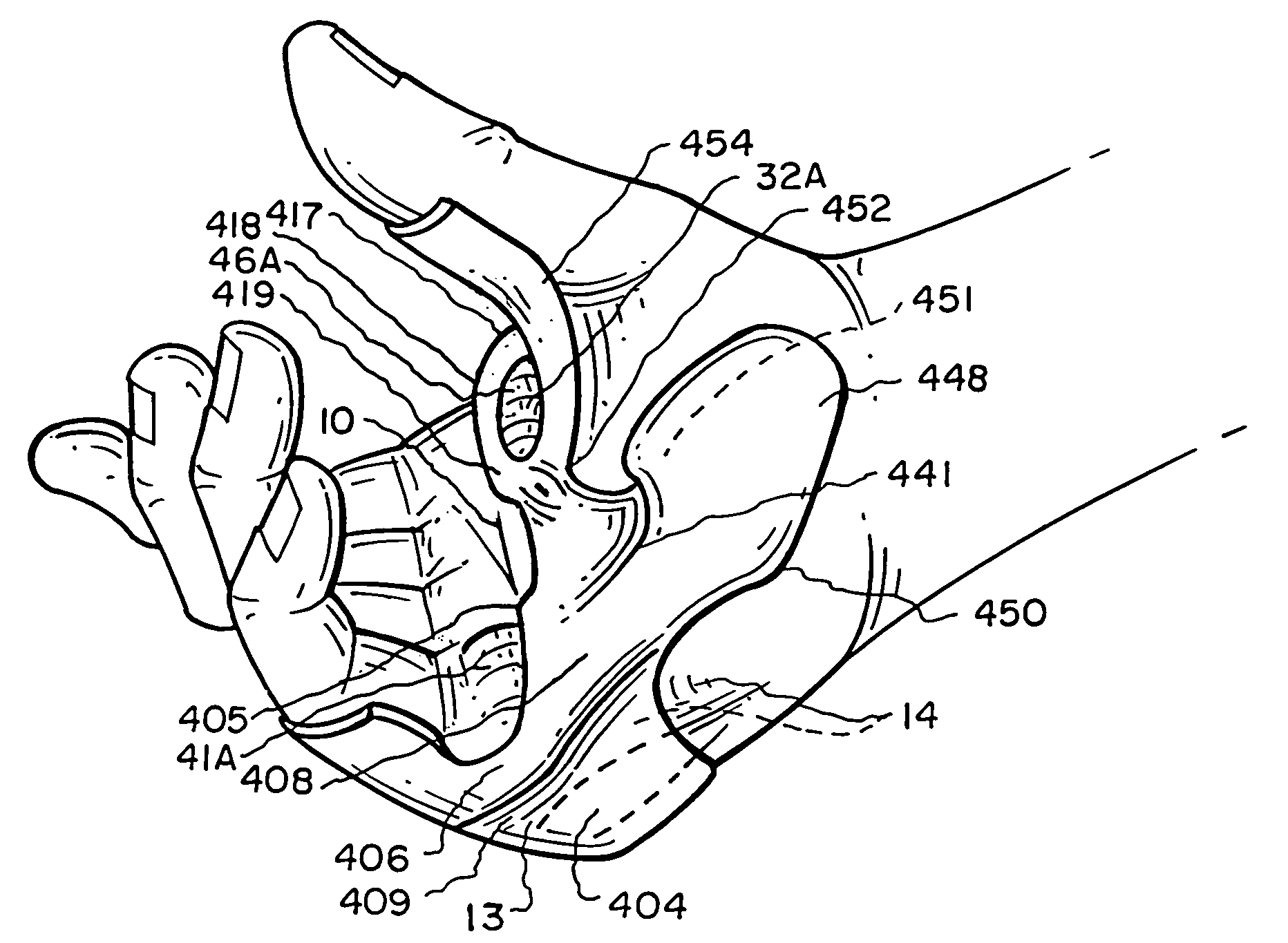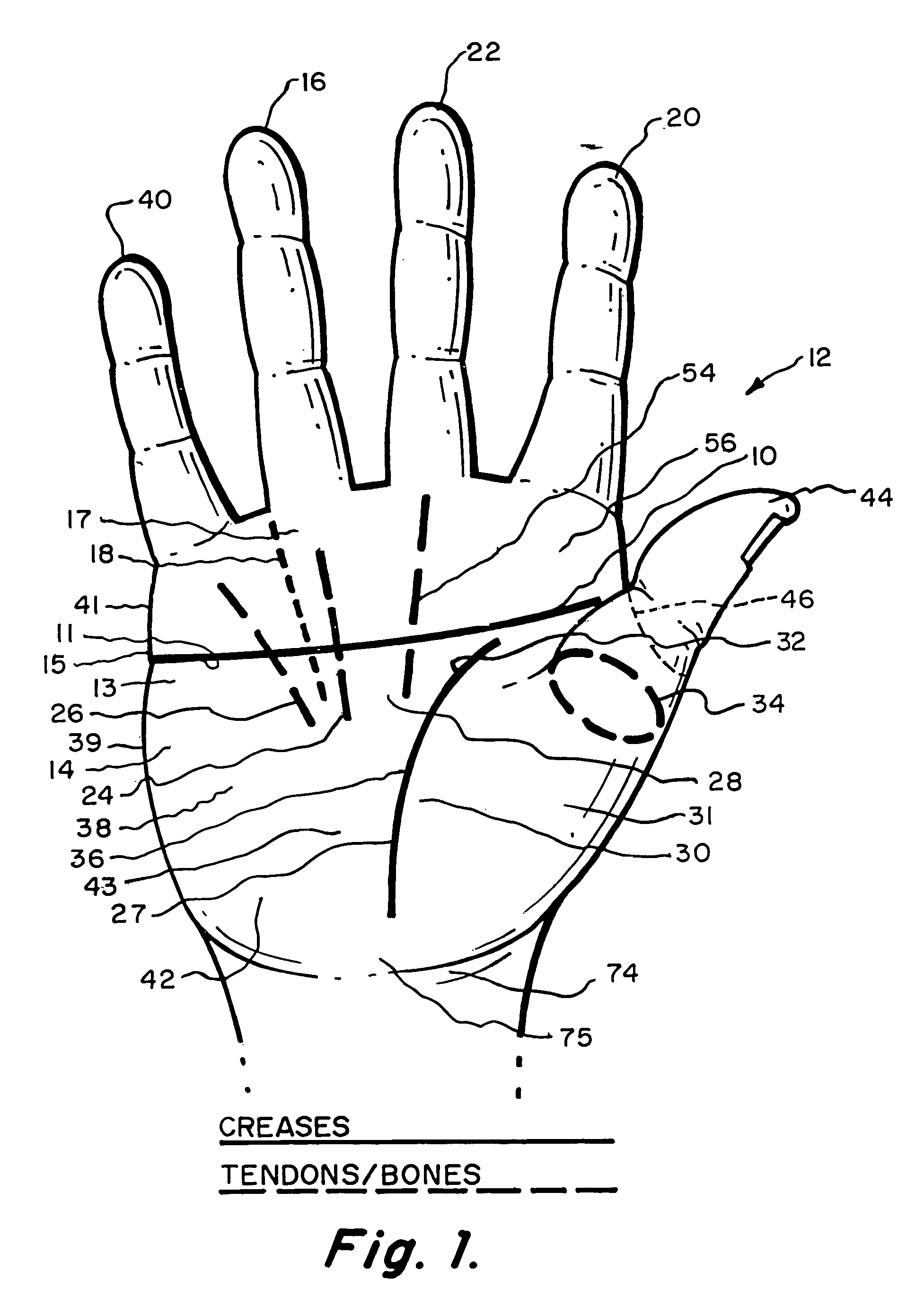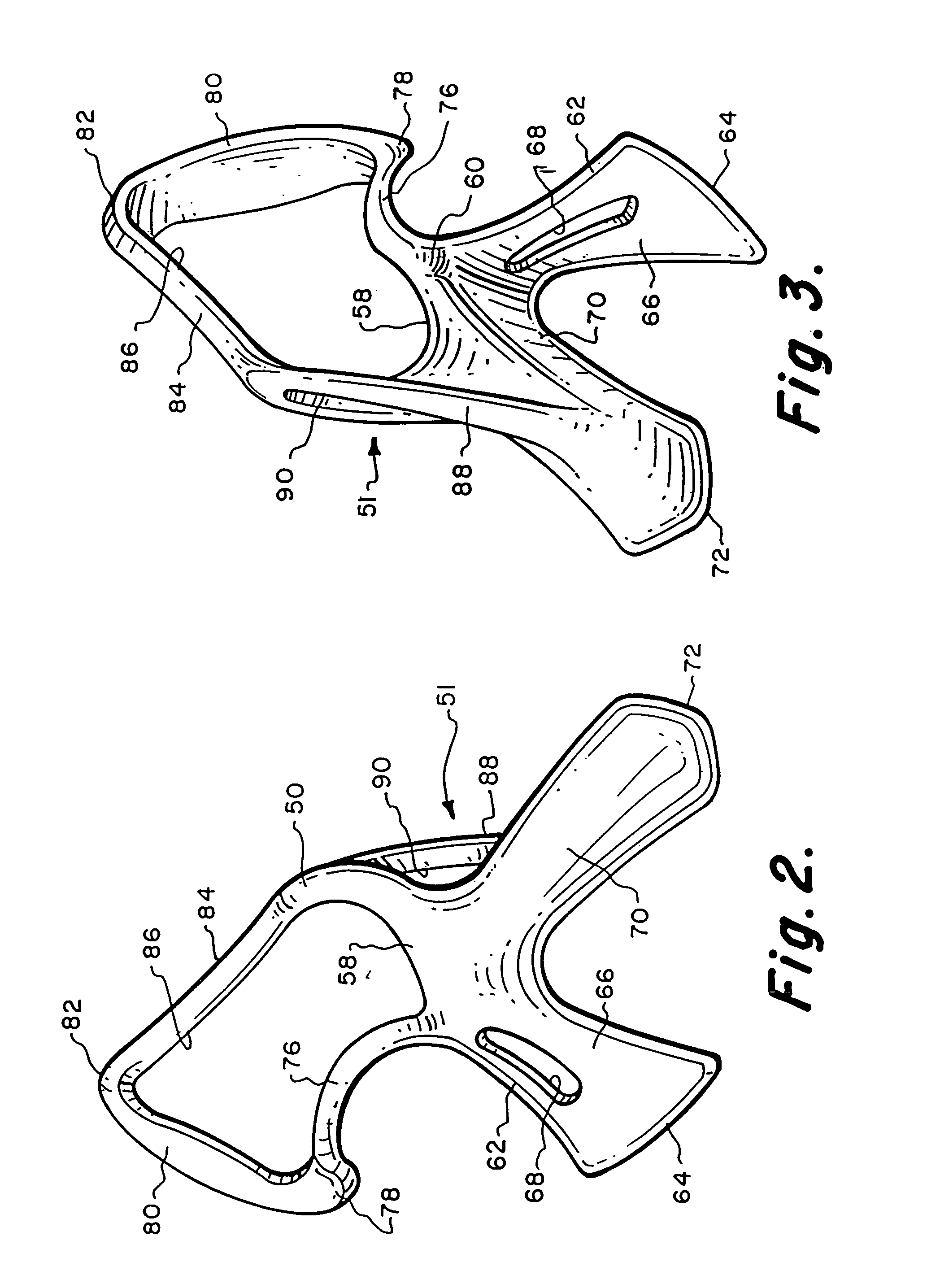Hand accessory usable with an implement handle
- Summary
- Abstract
- Description
- Claims
- Application Information
AI Technical Summary
Benefits of technology
Problems solved by technology
Method used
Image
Examples
embodiment 300
[0094]Much of the structure of lifeline anchor 320 is thumb base wedge 352, which contours the thumb 44 with thin material extending upwardly from swivel 330 and inwardly from lifeline contact 324, thumb base wedge 352 resting against the hand's thumb bases 30 and 31, and extending upwardly to circular thumb attachment 322, thence extending to the back side of the hand to glove / web anchor 326 pressing into the top of the hand's upper web 46 (from the back side of the hand) and serving to locate and fix the hand accessory to a glove. Glove / web anchor 326 is constructed at such an angle as to create forward tension at thumb attachment 322 away from the hand's sensitive thumb bones 34 when glove / web anchor 326 is flexed slightly forward to its attachment area of a glove. Glove / web anchor 326 also may receive contact from recoiling handle 48 depending on the user's grip, but the great majority of energy is dissipated in the lower hand through structure in the lower areas of embodiment 3...
embodiment 203
[0100]The location and composition of lever 308 is critical to the success of direct contact stress absorption. If the pathway of lever 308 towards thumb base / wrist anchor 350 moves upwardly (as in embodiment 203) angling over tough ball 38 with too much thickness, even though a tough area, discomfort from direct pressure of handle 48 will occur. The pathway of lever 308 must be as low as possible while still reaching its junction with thumb base / wrist anchor 350 (also at the lowest point allowed by stress receiving area wrist hollow 75), such that lever 308 runs primarily along the bottom of tough ball 38 (not supported by tough ball 38) but supported by fulcrum platform 302 anchored at lower tough ball 39 and “locked” into fleshy relocation channel 309, actually serving to “widen” the hand. Refinement of portions of lever 308 make hand accessory 300 workable with all types of bottom hand gripping of a baseball bat and are further explained in a final paragraph on “bottom hand grip...
embodiment 400
[0108]Without hand accessory 400, handle 48 recoiling or resting in the upper hand will push web area 32 to 46 downwardly / inwardly toward index knuckle 56 exposing thumb joint 34 to injury from handle 48. A major feature of embodiment 400 is a relocated lower web 32A whereby lower web 32 is pressed inwardly / upwardly spacing handle 48 away from thumb joint 34. A skin relocation originates at web point 426 and moves in two directions, the skin moving with mid-palm anchor 415 downwardly when gripping, the skin being displaced by mid-palm anchor 415 upwardly, that is, pressure from the gripping hand at lifeline / web anchor 425 pushes mid-palm anchor 415 pressed as one with the hand's thin palm skin downwardly moving into the tough ball area adding bulk to tough ball areas 38 and 39 increasing support of bridge 440, more importantly, the anchoring depth of lifeline / web anchor 425 displaces fleshy lower web 32 upwardly toward thumb joint 34 partially overlapping and protecting the thumb jo...
PUM
 Login to View More
Login to View More Abstract
Description
Claims
Application Information
 Login to View More
Login to View More - R&D
- Intellectual Property
- Life Sciences
- Materials
- Tech Scout
- Unparalleled Data Quality
- Higher Quality Content
- 60% Fewer Hallucinations
Browse by: Latest US Patents, China's latest patents, Technical Efficacy Thesaurus, Application Domain, Technology Topic, Popular Technical Reports.
© 2025 PatSnap. All rights reserved.Legal|Privacy policy|Modern Slavery Act Transparency Statement|Sitemap|About US| Contact US: help@patsnap.com



